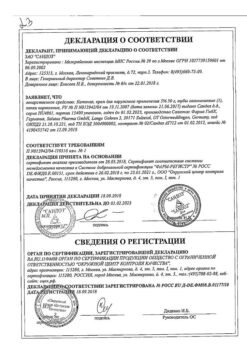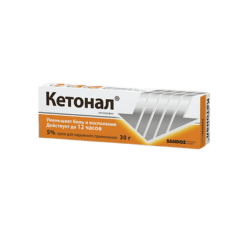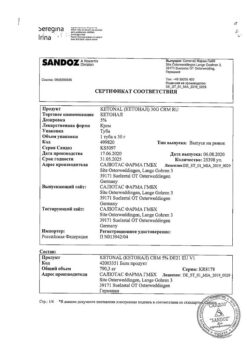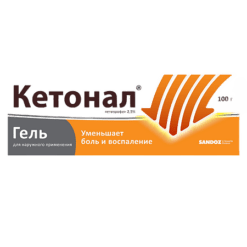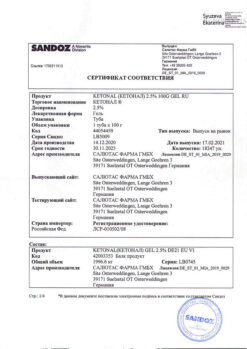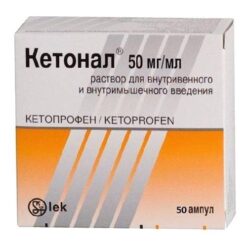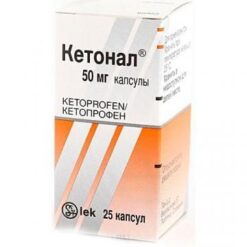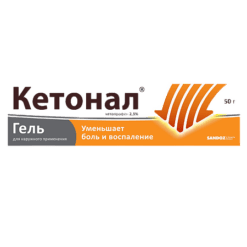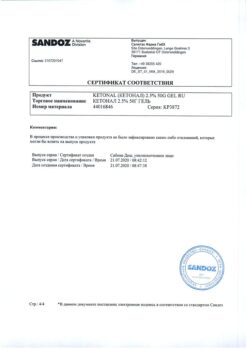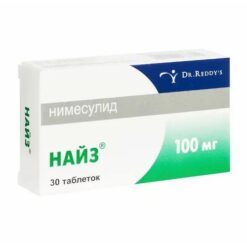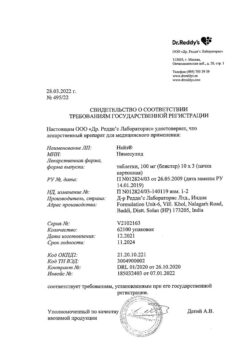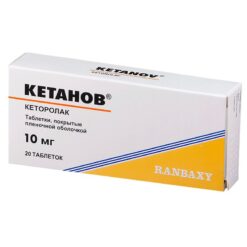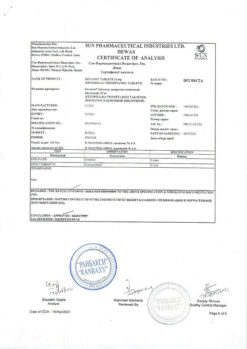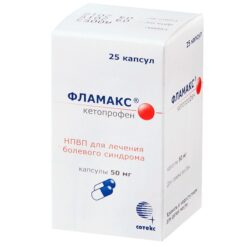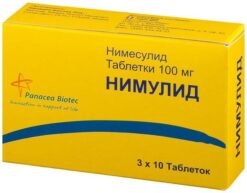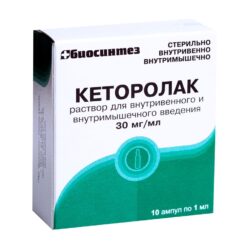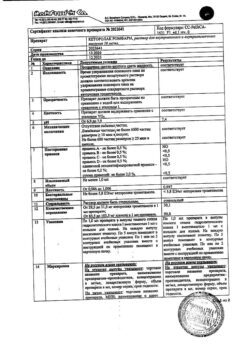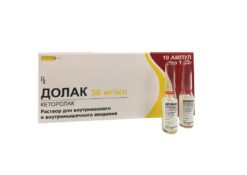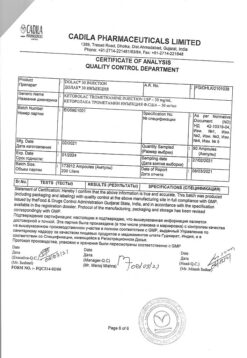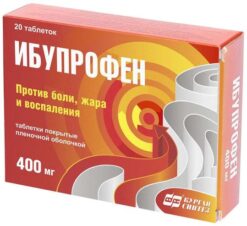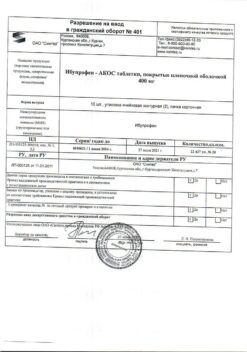No products in the cart.
Ketonal, cream 5% 50 g 2 pcs
€1.00
Out of stock
(E-mail when Stock is available)
Description
Ketoprofen is one of the most effective cyclooxygenase inhibitors. It also inhibits the activity of lipoxygenase and bradykinin. It stabilizes lysosomal membranes and prevents release of enzymes involved in the inflammatory process.
The main properties of ketoprofen are pronounced analgesic, anti-inflammatory and antipyretic effects. When using topical forms of ketoprofen for ligament injuries, back or joint pain, the analgesic effect of the drug is evident within 30 minutes after application.
Ketoprofen has no negative effect on joint cartilage.
Pharmacokinetics
Absorption
The penetration of local non-steroidal anti-inflammatory drugs through the skin depends on the physical and chemical properties of the components of the cream. The rate of release and absorption of ketoprofen in the form of cream for topical use depends on the filler of the drug. Compared with the oral form, the relative bioavailability of ketoprofen in the form of cream is about 5%. Ketoprofen in the form of cream mainly acts locally and has no systemic effect.
Distribution
Ketoprofen primarily binds to plasma proteins (99%). It penetrates into the joint tissues, including the synovial fluid, and reaches therapeutic concentrations there. At the same time the concentration of ketoprofen in blood plasma remains insignificant. When topically applied as a cream the maximum concentration of ketoprofen in plasma is observed after 6 hours.
Significant concentrations are present in the subcutaneous fatty tissue, periarticular tissues and synovial fluid. The action of the drug in the tissues lasts up to 12 hours.
Metabolism and excretion
Ketoprofen is metabolized in the liver to form conjugates which are eliminated mainly by the kidneys. Metabolism of ketoprofen does not depend on age, the presence of severe renal failure or cirrhosis. Ketoprofen is gradually excreted by the kidneys.
Indications
Indications
Symptomatic therapy – reduction of pain and inflammation – for the following conditions:
osteoarthritis of various localizations;
periarthritis, tendinitis, bursitis, myalgia, neuralgia, radiculitis;
injuries of the musculoskeletal system (including sports), bruises of muscles and ligaments, sprains, ruptures of ligaments and muscle tendons.
Pharmacological effect
Pharmacological effect
Ketoprofen is one of the most effective cyclooxygenase inhibitors. It also inhibits the activity of lipoxygenase and bradykinin. Stabilizes lysosomal membranes and prevents the release of enzymes involved in the inflammatory process.
The main properties of ketoprofen are pronounced analgesic, anti-inflammatory and antipyretic effects. When using local forms of ketoprofen for ligament damage, back pain or joint pain, the pain-relieving effect of the drug appears 30 minutes after application.
Ketoprofen does not have a negative effect on the condition of articular cartilage.
Pharmacokinetics
Absorption
The penetration of local non-steroidal anti-inflammatory drugs through the skin depends on the physical and chemical properties of the cream components. The rate of release and absorption of ketoprofen in the form of a cream for topical use depends on the excipient of the drug. Compared to the oral form, the relative bioavailability of ketoprofen in the form of a cream is about 5%. Ketoprofen in cream form mainly acts locally and does not have a systemic effect.
Distribution
Ketoprofen is predominantly bound to plasma proteins (99%). Penetrates into joint tissue, including synovial fluid, and reaches therapeutic concentrations there. At the same time, the concentration of ketoprofen in the blood plasma remains insignificant. When applied topically in the form of a cream, the maximum concentration of ketoprofen in plasma is observed after 6 hours.
Significant concentrations are present in subcutaneous fat, periarticular tissues and synovial fluid. The effect of the drug in tissues lasts up to 12 hours.
Metabolism and excretion
Ketoprofen is metabolized in the liver to form conjugates, which are excreted primarily by the kidneys. The metabolism of ketoprofen does not depend on age, the presence of severe renal failure or liver cirrhosis. Ketoprofen is gradually eliminated by the kidneys.
Special instructions
Special instructions
It is necessary to avoid getting the cream in the eyes, on the skin around the eyes, mucous membranes.
If skin reactions occur, including those that develop during combined use with octocrylene-containing drugs, treatment should be stopped immediately.
Patients suffering from bronchial asthma in combination with chronic rhinitis, chronic sinusitis and/or polyposis of the nose or paranasal sinuses have a higher risk of developing allergic reactions when using aspirin and/or NSAIDs than the rest of the population.
To reduce the risk of developing photosensitivity, it is recommended to protect the skin areas treated with the cream with clothing from exposure to UV radiation throughout the entire treatment period and for another 2 weeks after stopping use. The recommended duration of treatment should not be exceeded due to the increased risk of contact dermatitis and photosensitivity reactions over time.
You should wash your hands thoroughly after each application of the drug.
Active ingredient
Active ingredient
Ketoprofen
Composition
Composition
1 g of cream for external use contains:
active ingredient:
ketoprofen – 50.0 mg;
excipients:
methyl parahydroxybenzoate (methylhydroxybenzoate) 2.0 mg,
propyl parahydroxybenzoate (propylhydroxybenzoate) 0.5 mg,
propylene glycol 70.0 mg,
isopropyl myristate 50.0 mg,
Vaseline (white) 320.0 mg,
elfakos ST 9 30.0 mg,
propylene glycol glyceryl oleate 90.0 mg,
magnesium sulfate 5.0 mg,
purified water 382.5 mg.
Contraindications
Contraindications
Hypersensitivity to ketoprofen or other components of the drug, as well as to salicylates, tiaprofenic acid or other NSAIDs, fenofibrate, ultraviolet (UV) blockers, fragrances;
a history of attacks of bronchial asthma or allergic rhinitis after the use of NSAIDs and salicylates;
III trimester of pregnancy;
children’s age (up to 15 years);
violation of the integrity of the skin in the area where the cream is applied (eczema, acne, weeping dermatitis, open or infected wound);
history of photosensitivity reactions;
exposure to sunlight, incl. indirect sunlight and UV irradiation in a solarium throughout the entire treatment period and for another 2 weeks after stopping treatment with the drug.
With caution
You should consult your doctor before using Ketonal® cream if you have:
impaired liver and/or kidney function;
erosive and ulcerative lesions of the gastrointestinal tract;
blood diseases;
bronchial asthma;
chronic heart failure.
Side Effects
Side Effects
According to the World Health Organization (WHO), adverse effects are classified according to their frequency as follows: very common (≥1/10), common (≥1/100 to <1/10), uncommon (≥1/1000 to <1/100), rare (≥1/10000 to <1/1000), very rare (<1/10000); frequency unknown - based on available data, it was not possible to determine the frequency of occurrence.
Immune system disorders
frequency unknown: anaphylactic shock, angioedema (Quincke’s edema), hypersensitivity reactions.
Gastrointestinal disorders
very rarely: peptic ulcer, bleeding, diarrhea.
Disorders of the skin and subcutaneous tissues
uncommon: local skin reactions such as erythema, eczema, itching and burning;
rarely: photosensitivity reactions, urticaria.
There have been rare reports of more severe reactions, such as bullous or phlyctenulous eczema, which may spread beyond the site of application or become generalized.
Renal and urinary tract disorders
very rare: deterioration of renal function in patients with chronic renal failure.
If any side effects occur, you should stop using the drug and consult a doctor.
Interaction
Interaction
Patients taking coumarin anticoagulants are advised to regularly monitor the international normalized ratio (INR).
Ketoprofen, like other NSAIDs, may reduce the elimination of methotrexate and increase its toxicity.
Interaction with other drugs and the effect on their elimination are not significant.
Overdose
Overdose
Overdose is unlikely when the drug is used externally.
In case of overdose, the skin should be thoroughly rinsed with running water. It is necessary to stop using the cream
Ketonal® and consult your doctor.
If the drug is ingested, systemic adverse reactions may develop.
In this case, symptomatic treatment and supportive care are necessary, as in case of overdose with oral forms.
Storage conditions
Storage conditions
At a temperature not exceeding 25 °C.
Keep out of the reach of children.
Shelf life
Shelf life
5 years.
Do not use the drug after the expiration date indicated on the package.
Manufacturer
Manufacturer
Salutas Pharma GmbH, Germany
Additional information
| Shelf life | 5 years. Do not use the drug after the expiration date stated on the package. |
|---|---|
| Conditions of storage | At a temperature not exceeding 25 ° C. Keep out of reach of children. |
| Manufacturer | Salutas Pharma GmbH, Germany |
| Medication form | exterior cream |
| Brand | Salutas Pharma GmbH |
Other forms…
Related products
Buy Ketonal, cream 5% 50 g 2 pcs with delivery to USA, UK, Europe and over 120 other countries.



